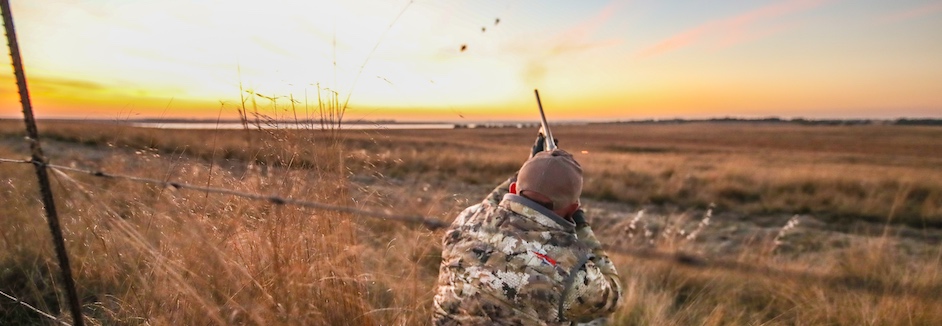Crested Guineafowl
Crested guineafowl (Guttera pucherani) is a distinctive and visually striking bird that belongs to the Numididae family, which includes other guineafowl species known for their ground-dwelling habits and elaborate plumage. This medium-sized bird measures around 50–56 cm (20–22 inches) in length, with a weight ranging between 1.3 and 1.6 kg (2.9–3.5 pounds).
The most distinguishing feature of the crested guineafowl is the conspicuous, helmet-like crest atop its head that is composed of dense, curly black feathers that give the bird its characteristic “mop-headed” appearance. The crest can be slightly raised or flattened depending on the bird’s mood or social interactions, serving as both a communication tool and a display feature during courtship.
The body plumage of the crested guineafowl is predominantly dark blue to black, speckled with numerous small, white spots that create a striking pattern across the body. This dotted pattern is highly uniform, covering the bird’s back, wings, and breast, and providing effective camouflage in the dappled light of its forest habitat. The underparts, particularly the belly, are generally lighter and less spotted, sometimes showing a slight bluish tinge.
The bird’s head, apart from the crest, is mostly bare, with bluish-gray skin that contrasts with its dark plumage. This bare skin is an adaptation to the bird’s hot and humid environment, helping with thermoregulation. The eyes are large, round, and dark brown, providing excellent vision in the low-light conditions of the forest understory.
The beak is relatively short, stout, and slightly curved, colored a dark gray to black. The legs and feet are also dark and robust, equipped with strong claws that are well-suited for scratching at the ground in search of food. The tail is short and typically held close to the body.
Crested guineafowl are social birds, often found in small flocks that range from 10 to 20 individuals, though larger groups can form in areas with abundant food resources. They are highly vocal, using a variety of calls, including loud cackles, whistles, and grating sounds, to maintain contact with flock members and to alert others to potential threats.
These birds are primarily ground-dwellers, spending much of their time foraging for food on the forest floor. They are omnivorous, feeding on a diverse diet that includes seeds, fruits, but more insects and small invertebrates than helmeted guineafowl. Their foraging behavior is characterized by continuous scratching and pecking at the leaf litter, often in the company of other flock members.
Despite their ground-based habits, crested guineafowl are capable of short, explosive flights, usually to escape predators or to reach roosting sites in trees at night. They are also known for their strong legs, which allow them to run swiftly through dense vegetation when threatened.
Crested guineafowl are native to sub-Saharan Africa, with their range extending across central and eastern regions, including countries like Kenya, Tanzania, Uganda, and the Democratic Republic of the Congo. They inhabit dense, tropical and subtropical forests, as well as woodland savannas and areas with thick undergrowth. They prefer habitats with ample cover, where their plumage allows them to blend in with the surroundings, avoiding detection by predators.
The breeding season of the crested guineafowl varies depending on the region, often coinciding with the rainy season when food is most abundant. These birds are monogamous, forming long-term pair bonds. During courtship, males engage in elaborate displays, including head-bobbing, wing-flapping, and crest-raising, to attract a mate.
Nests are usually built on the ground, hidden in dense vegetation to protect them from predators. The nest is a simple scrape in the ground, lined with leaves and other plant materials. Females typically lay between 4 to 8 eggs, which are pale brown to buff-colored, with fine speckling. Both parents are involved in incubating the eggs, which hatch after about 25–28 days. The chicks are precocial, meaning they are born relatively mature and can follow their parents shortly after hatching, although they remain under parental care for protection and guidance in finding food.
The crested guineafowl is currently listed as Least Concern by the IUCN, indicating that it is not immediately at risk of extinction. However, habitat destruction due to deforestation and human encroachment poses a potential threat to local populations. Additionally, these birds are sometimes hunted for their meat and feathers, which are used in traditional rituals and decorations in some cultures. Conservation efforts focus on preserving forest habitats and regulating hunting to ensure the long-term survival of the species.
Crested guineafowl play a vital role in their ecosystems, particularly in seed dispersal and pest control. By consuming a wide variety of seeds and fruits, they help in the regeneration of forest plants. Their diet of insects and other small invertebrates also contributes to controlling pest populations, benefiting the overall health of the forest ecosystem.
This remarkable bird, with its unique crest and intricate plumage, is a fascinating subject for study and a striking example of the biodiversity found in Africa’s forested regions.







